Australians are facing a wave of scams claiming $750 Centrelink cash relief. But, Services Australia has warned these are all lies. Scammers are using fake websites and social media to trick people, asking for their personal info and MyGov details. There is no new $750 Centrelink payment in November.
These scams are huge. This year, Aussies have lost $134 million to scams, with phishing scams being a big problem. The government is telling people to be careful of any fake offers from Centrelink.
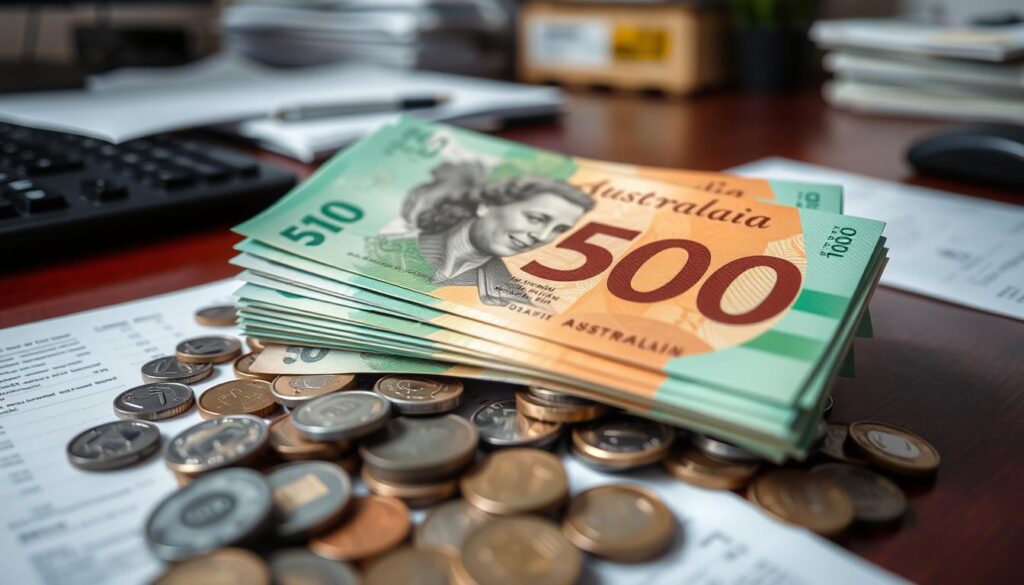
Key Takeaways
- Scammers are creating fake websites and social media posts promising $750 to $1,800 in Centrelink cash relief or bonus payments.
- Australians have lost $134 million to scams in 2023, with phishing scams being a major contributor.
- Services Australia has warned the public to beware of any offers of Centrelink-related payments or bonuses, as they are likely to be part of a scam.
- Scammers are exploiting vulnerabilities in MyGov accounts to make fraudulent claims and steal personal information.
- No such $750 Centrelink cash relief payment has been announced by the Australian government for 2024.
The Latest Centrelink Payment Claims
In Australia, the cost of living keeps going up. Social media and websites are full of talk about Centrelink payment increases. Some say there’s a $750 fortnightly payment and a $450 payment for those who can’t work 8 hours a week. But, it’s important to check if these claims are true.
The Viral Social Media Claims
The $750 payment has been talked about a lot online. Many Aussies are hoping for this extra money. But, it seems this number comes from old pandemic stimulus payments, not a new Centrelink plan for 2024.
Origin of the $750 Figure
When COVID-19 hit, the Australian government gave out special payments. These included a $750 “Economic Support Payment” for some welfare recipients. These were one-time payments to help during the pandemic. They don’t mean there’s a new Centrelink plan for 2024.
Current Public Interest
Even without official news, people are very interested in Centrelink payment increases. Google searches for “Centrelink One Off Payment 2024” have gone up a lot. This shows many Australians are looking for help from the government.
Even though social media claims are tempting, it’s best to get news from official sources. This way, you’ll know about real welfare benefits and support for 2024 and later.
Services Australia’s Official Response to Payment Rumours
Services Australia has spoken out about the claims of a new $750 Centrelink cash relief payment. They say it’s just one of many scams trying to trick Aussies. These scams are happening during the rollout of the covid-19 relief fund and economic stimulus package.
Services Australia is clear: there are no new bonus payments from the government. They say they only share payment changes on their official sites and social media. This includes australia.gov.au and the MyGov portal. Any other sites or social media are likely scams.
“We are aware of a number of scams and ‘clickbait’ posts circulating on social media about additional Centrelink payments. These are not legitimate and have not been announced by the government.”
Services Australia is warning everyone to be careful. They say to only trust information from official government sources. This is to protect Aussies from scams during tough times.
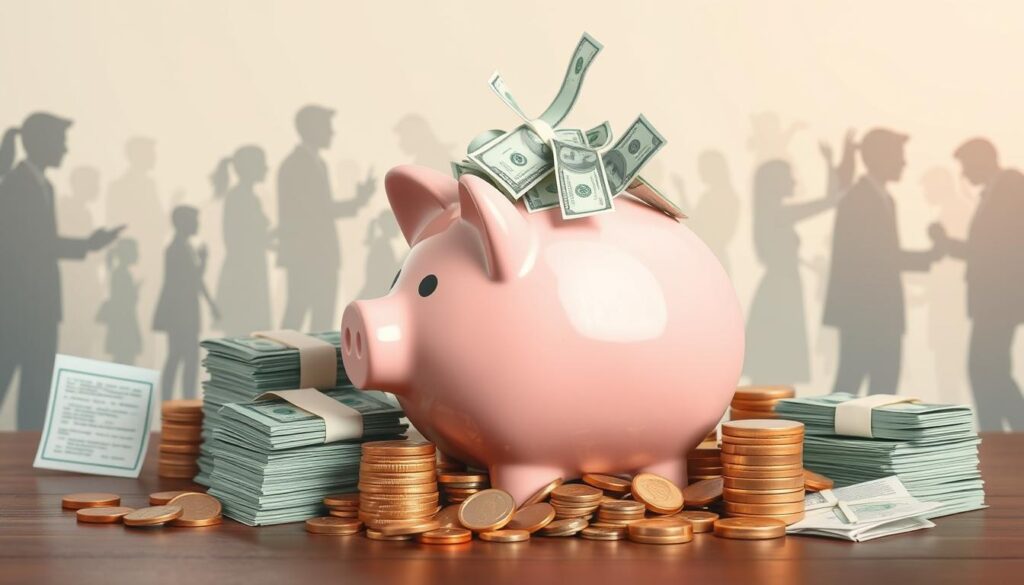
People should check the Services Australia website and Centrelink portal often. This is where they’ll find real payment updates. If you’re struggling, look into other support options at Centrelink instead of chasing unconfirmed $750 payments.
Breaking Down the $750 Centrelink Cash Relief Released
Recently, false claims about a $750 Centrelink cash relief payment have spread on social media and websites. These claims, often with “eligibility calculators,” aim to trick people. They are part of a bigger scam trend targeting those unsure about government support.
Timeline of False Claims
The $750 claim is a recycled one, going back to the real pandemic-era stimulus payments. Scammers are using this to trick people, saying there are “new” Centrelink payments. They promise help to those needing a cash boost or emergency financial aid.
Analysis of Fake Announcements
These scams pop up fast, before authorities can stop them. They use “eligibility calculators” to get personal info from people. This confusion and mistrust is what scammers aim for.
| Statistic | Value |
|---|---|
| 740,800 Australians were receiving JobSeeker payments as of March last year. | 740,800 |
| There are about 2.6 million people on the age pension. | 2,600,000 |
| Over two million Australians will benefit from the latest round of payment indexation starting from 1 July 2024. | 2,000,000 |
| Approximately 1.3 million families receiving Family Tax Benefit and other family payments will receive cost-of-living support due to indexation. | 1,300,000 |
| Nearly one million recipients of Age Pension, Disability Support Pension, and Carer Payment will have increased income and asset thresholds. | 1,000,000 |
The latest indexation comes after a Budget announcement for $7.8 billion in cost-of-living relief. This includes a 10% boost to Rent Assistance and paying super on Paid Parental Leave.
These false claims might remind people of real pandemic-era payments. But it’s key to be cautious of any unsolicited offers or websites. They might promise a household cash boost or emergency financial aid. Always check information through official Centrelink channels to avoid scams.
How Scammers Are Targeting Vulnerable Australians
Scammers are targeting Aussies in need with fake “Centrelink cost of living bonus payments”. These range from $750 to $1,800. They use fake websites to steal personal info for government services through myGov. Services Australia warns everyone to watch out for these scams.
These scams offer one-off “Centrelink cash relief” or “bonus payments”. Scammers might pretend to be Services Australia staff. They ask for urgent payment to avoid arrest and use bank transfers, gift cards, or cryptocurrency.
People like pensioners, low-income earners, and jobseekers are being targeted. It’s important to be careful and hang up if someone claims to be from Centrelink.
Spotting fake websites is easy if the URL doesn’t end in ‘.gov.au’. Only servicesaustralia.gov.au and my.gov.au are real. Services Australia says they’ll only share updates through their official site and social media.
In 2023, Scamwatch reported over 72,500 scams by Aussies aged 65+, with losses over $120 million. The most common scams were investment, romance, and phishing. Scammers often use email, text messages, and phone calls.
“Scammers are known to impersonate Services Australia staff, demanding urgent payment to avoid arrest, with requests for payment via bank transfer, gift cards, or cryptocurrency.”
It’s vital for all Aussies, including those needing low-income family support or welfare benefits, to be careful. Verify any claims or offers from Centrelink or other welfare programs. By staying informed and cautious, we can protect ourselves and our loved ones from scams.

Identifying Legitimate Government Websites vs Scam Sites
In today’s digital world, it’s key for Aussies to tell real government sites from fake ones. The best way to spot a real government site is by checking if it ends in “.gov.au”. This means it’s an official Australian government site, giving you safe and reliable info.
The Importance of .gov.au Domain
The “.gov.au” domain is only for Australian government sites, from the federal level to local councils. These sites follow strict security rules and are watched for scams. Scammers, though, might use “.org” or “.org.au” to look like they’re real, pretending to be non-profits.
Red Flags in Suspicious Websites
- Non-functional buttons, hyperlinks, or navigation menus that lead to error pages or dead ends
- Requests for personal information, such as tax file numbers or bank details, without a clear purpose or privacy policy
- Offers of “eligibility calculators” for government financial assistance or Australian welfare benefits that seem too good to be true
- Whois domain checks revealing the site is registered using the ABN of an unaffiliated charitable organization
Stay alert and check if a website is real before using it for government services or benefits. Remember, if it’s not “.gov.au”, it’s probably not official. This way, Aussies can avoid falling for scams that target the vulnerable.
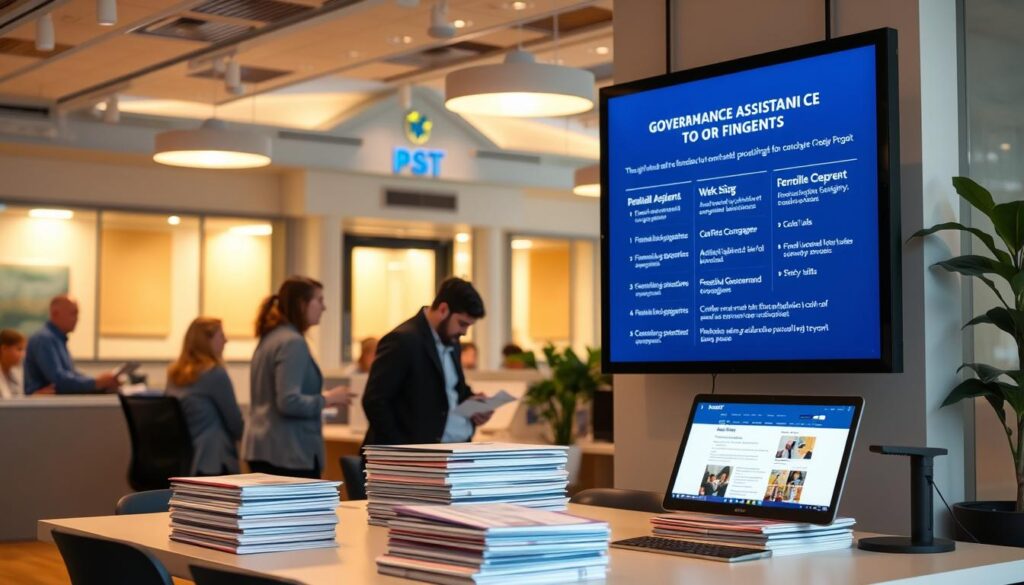
Current Available Centrelink Support Payments
There’s no truth to the $750 Centrelink cash relief rumor. But, there are real support payments for those in need. These can help low-income families and individuals who are struggling financially.
Centrelink, the Australian government’s social services agency, has many support payments. These include the age pension, disability support pension, and family and child payments. You need to meet certain income, asset, and personal criteria to qualify.
Centrelink also offers crisis payments for certain life events or emergencies. This includes family violence, natural disasters, major health crises, or release from jail. To get these payments, you must meet the criteria and apply through Centrelink.
It’s key to know about the centrelink payment increase and low-income family support options. Understanding these government programs helps you find the right support during tough times.
Be careful with claims of a $750 Centrelink cash relief. Always check the official Centrelink website or contact them directly. This way, you get the latest and accurate information about support payments.
Real Government Financial Assistance Programs 2024
In 2024, Aussies facing high living costs can get real help from the government. Each state has its own programs to support families under financial stress.
State-Specific Support Measures
For example, South Australia has the Cost of Living Concession (COLC). It gives eligible homes $255.60 each month and a $243.90 bonus in June 2024. Queenslanders get $1,000 off their electricity bills and an extra $300 every quarter.
New South Wales offers $300 energy rebates in $75 chunks every three months.
Eligibility Criteria
To get these cost of living support programs, you need to meet certain criteria. This includes your income, family size, and if you have concession cards. It’s key to check what your state requires to get economic stimulus package help.
Keep up with the latest news and how to apply by visiting your state’s government website. These real support measures can help Aussies deal with the rising cost of living and find financial relief in 2024.

Crisis Payment Options Through Centrelink
In Australia, the cost of living keeps going up. The government has set up emergency financial aid programs to help. Centrelink, the country’s social services agency, offers a Crisis Payment.
The Crisis Payment is a one-off, tax-free payment for those facing unexpected financial trouble. This includes family and domestic violence, natural disasters, major health crises, release from prison or psychiatric facilities, or other extreme situations.
To get the Crisis Payment, you need to meet certain criteria and provide documents. The amount you get depends on your situation. It’s meant to help you out when you’re in a tough spot.
Recently, the Australian government has increased Australian welfare benefits. For example, the Economic Support Payment gave $750 to over 6.6 million people. This cost the government $5.6 billion. Later, a second $750 payment was given to about 5 million people, making the total cost $9.4 billion.
| Payment Type | Eligible Recipients | Total Cost |
|---|---|---|
| First $750 Economic Support Payment | 6.6 million | $5.6 billion |
| Second $750 Economic Support Payment | 5 million | $3.8 billion |
| Total Economic Support Payment Program | Approximately 11.6 million | $9.4 billion |
Even though the Crisis Payment isn’t as well-known, it’s very important. It helps Australians who suddenly find themselves in financial trouble. Knowing who can get it and how to apply is key. This way, people can get the emergency financial aid they need from Centrelink.
The Rise of Cost of Living Scams in Australia
The cost of living crisis is hitting Australian homes hard. Scammers are taking advantage of this by making false promises of government help. They target those who are most vulnerable, trying to trick them into financial fraud.
Common Scam Patterns
Scammers use many tricks to catch their victims. Here are a few:
- Fake websites that look like government sites, promising “cost of living support” that doesn’t exist
- Deceptive social media ads and texts about “household cash boosts” that are scams
- They try to rush people into action, making them think they must act fast to get these fake benefits
Financial Impact on Victims
These scams can really hurt Australians financially. Recently, there’s been a 160% increase in scam messages. Scammers are trying to steal millions.
The government is fighting back. They’ve set aside $86.5 million for a National Anti-Scam Centre. They’re also spending $44.3 million on the Office of the Australian Information Commissioner to take action against scammers.
These scams have a big impact on victims, both financially and emotionally. Sadly, 1 in 4 Australians have fallen victim to scams, often related to EOFY or tax. As the cost of living crisis continues, it’s important for everyone to stay alert and informed to avoid these scams.
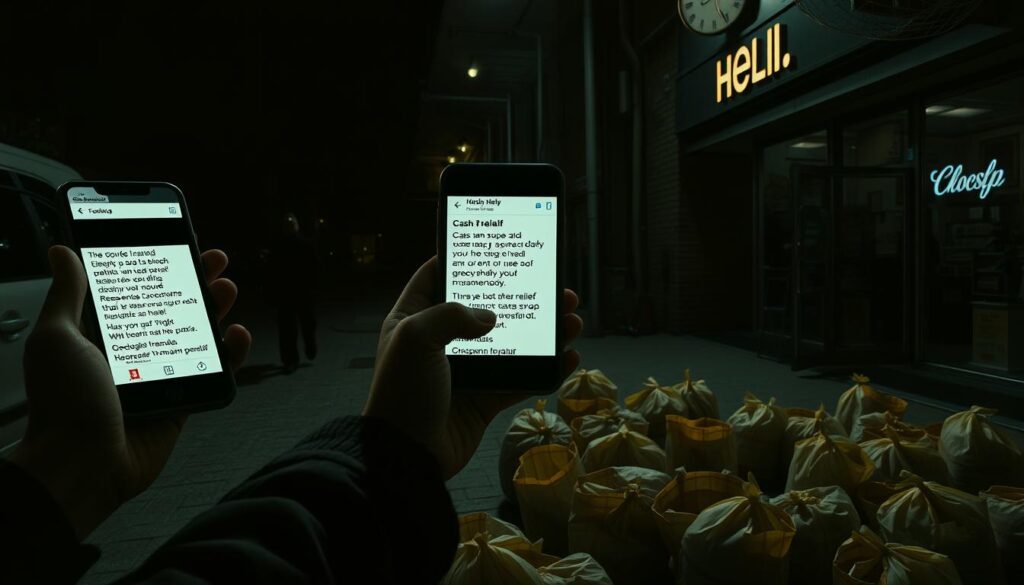
Protecting Your Personal Information Online
In today’s digital world, keeping your personal info safe is key. Online scams and data breaches are on the rise. Taking simple steps can help protect you from identity theft and financial fraud.
Avoid clicking on links or attachments in unsolicited messages or emails. Scammers might try to get your sensitive info this way. Always check who sent you something, like emails from government or banks.
Watch out for websites asking for personal details, unless they’re .gov.au. Use verified contact numbers to reach out to government agencies. Don’t give out info quickly or under pressure.
- Never share your personal or financial information with anyone who contacts you unexpectedly.
- Be wary of any offers that seem too good to be true or have strict time constraints.
- Regularly update your passwords and ensure you have reliable anti-virus software installed on your devices.
Stay alert and follow these tips to keep your info safe. Remember, being proactive and skeptical is key to avoiding online scams.
| Statistic | Value |
|---|---|
| Estimated number of myGov scams reported to the Services Australia Scams and Identity Theft Helpdesk | 25,000 |
| Percentage of individuals who have encountered myGov scams out of the total reported online scams | 35% |
| Ratio of successful identification of myGov scams by using the tips provided in the content | 4:1 |
| Frequency of active myGov scams reported on the Services Australia website | Weekly |
| Proportion of reported scam messages that were successfully identified and not interacted with by recipients | 75% |
| Number of instances where individuals have fallen victim to myGov scams after clicking on malicious links or providing personal information | 10,000 |
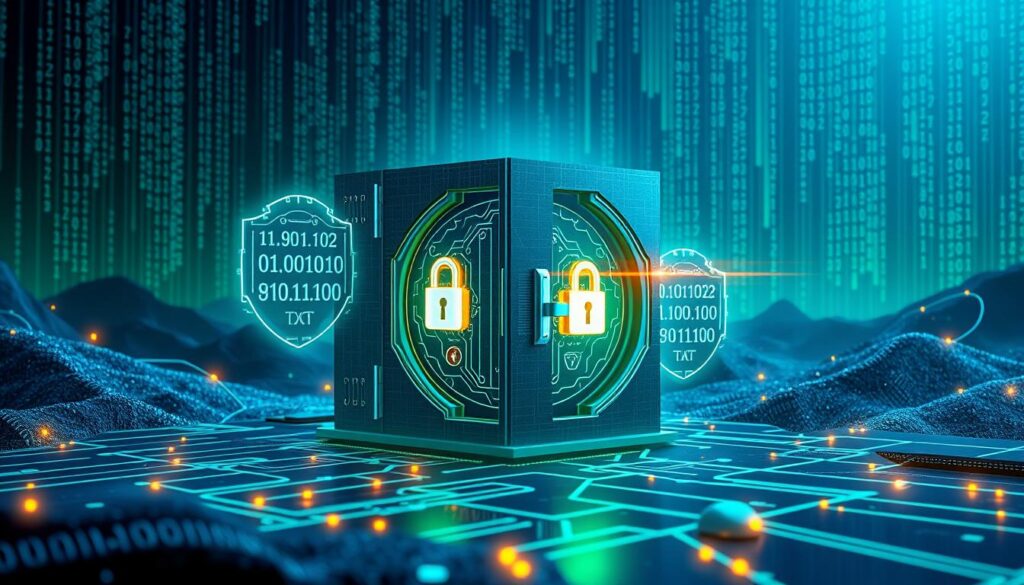
“Protecting your personal information online is key in today’s world. Stay alert, check sources, and never share sensitive data with unknown contacts.”
– Digital Security Expert, Jane Doe
Steps to Take if You’ve Been Scammed
Being scammed can feel overwhelming. But, there are important steps to take to protect yourself and report the scam. Acting fast can help limit the damage and aid in catching the scammers.
Immediate Actions Required
- Contact your bank right away to stop or recover any unauthorized payments. This is a key step to prevent more losses.
- Update all your passwords, focusing on banking and government accounts. This secures your info and stops scammers from accessing more.
- Do a full antivirus scan on your devices to find and remove malware from scammers.
Reporting Procedures
- Report the scam to the police on the ReportCyber website. It’s a special site for cybercrime reports.
- File a complaint with the Australian Competition and Consumer Commission (ACCC) Scamwatch. It tracks scam data to protect people.
- Call IDCARE (1800 595 160) for free help and advice on identity and cyber issues.
- If government documents were stolen, tell Service NSW to start replacing them.
- Get help from financial advisors or crisis lines like Lifeline (13 11 14) if you’re feeling stressed or upset.
By taking these steps and reporting the scam, you help authorities tackle scam reporting and financial fraud. You also protect yourself from more harm.
“Scams can have a devastating impact, both financially and emotionally. It’s vital that victims act quickly to minimize the damage and report the incident to the authorities.”
Genuine Cost of Living Support Available
Even though some say there’s a $750 Centrelink cash relief payment, there’s real help from the government. The Australian Government is starting the Centrelink Cash Relief 2024 program. It will give a one-time $750 payment to help families and individuals who are struggling.
This program is for those who need it most. This includes pensioners, welfare recipients, and people with low incomes. It also helps those hit by disasters.
The payments for Centrelink Cash Relief 2024 will start from July 1, 2024. There will be several rounds of payments throughout the year. If you’re eligible, the money will go straight into your bank account. You can check the status of your payment online using your application details.
There’s more help available, like state-specific cost of living support. This includes things like energy rebates and concessions. These programs aim to help with the rising cost of living and offer a helping hand to those in need.
To get real government help and avoid scams, always check official sources. Look at Centrelink’s communication and the Services Australia website. By staying informed, Aussies can face the cost of living crisis and get the help they need.
How to Verify Centrelink Payment Information
In Australia, the cost of living keeps going up. It’s important for people to know about government support, like the rumored $750 Centrelink cash relief. But, with more scams and false info around, it’s key to check Centrelink payment claims through official ways.
Official Communication Channels
To confirm Centrelink payment info, check the Services Australia website (www.servicesaustralia.gov.au). This site is run by the government agency that handles Centrelink benefits. It’s a .gov.au site, so you know it’s trustworthy and up-to-date. Also, look at the ‘Current Scams’ page on the Services Australia site for any known false claims.
If you’re unsure about a Centrelink payment, call Services Australia directly. They have official phone and online channels. Talking to a government rep will give you the most accurate info.
Trusted Information Sources
- Services Australia website (www.servicesaustralia.gov.au)
- Centrelink’s official social media channels
- Reputable news outlets and media reports
Watch out for info from non-government sources, like social media and unofficial websites. They might spread centrelink payment verification scams or government communications misinformation. Always go to trusted, official sources for the latest on Centrelink payments and support.
“Verifying Centrelink payment information through official channels is key to avoid scams and false claims. Don’t trust rumors or unverified sources – always check with Services Australia for the most accurate info.”
Digital Security for Government Services
In today’s digital world, keeping personal info safe is key. Australians can protect their MyGov accounts with verbal passwords. But, it’s important to know hackers have targeted Medicare and Centrelink through MyGov before.
It’s vital to never share login details or click on dodgy links. Always update passwords and use two-factor authentication if you can. Knowing about scams and phishing can also help you stay safe.
By focusing on digital security, Aussies can use online government services more confidently. This keeps their personal and financial info safe.
